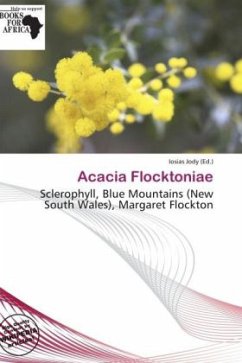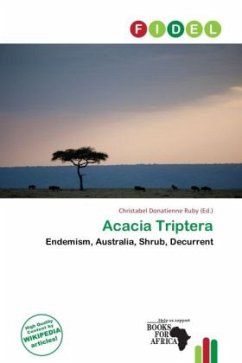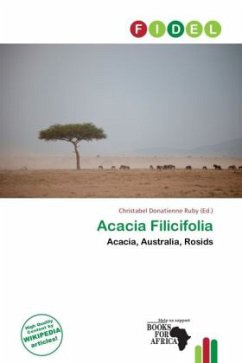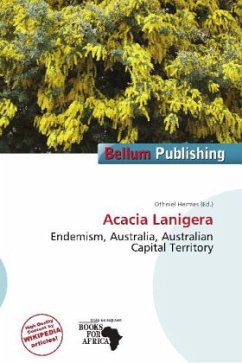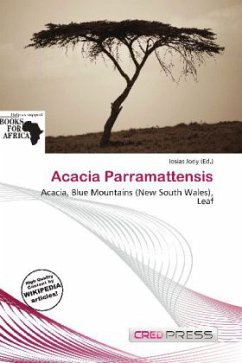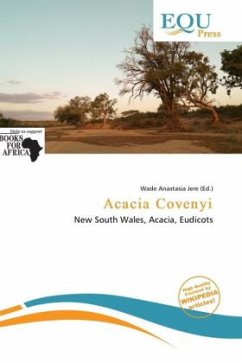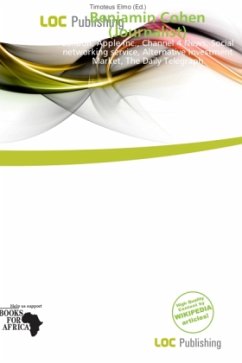
Acacia Gunnii
Shrub, Endemism, George Bentham
Herausgegeben: Elmo, Timoteus
Versandkostenfrei!
Versandfertig in 6-10 Tagen
23,99 €
inkl. MwSt.

PAYBACK Punkte
12 °P sammeln!
Please note that the content of this book primarily consists of articles available from Wikipedia or other free sources online. Acacia gunnii, commonly known as Ploughshare Wattle or Dog's Tooth Wattle, is a which is to south-eastern . It grows to up to 1 metre high and has prickly which are 4 to 15 mm long. The cream to pale yellow globular flowerheads appear singly in the axils of the phyllodes in June to October, followed by curved or coiled seed pods which are 40 mm long and 4 to 5 mm wide. The species was first formally described by English botanist in the London Journal of Botany in 1842...
Please note that the content of this book primarily consists of articles available from Wikipedia or other free sources online. Acacia gunnii, commonly known as Ploughshare Wattle or Dog's Tooth Wattle, is a which is to south-eastern . It grows to up to 1 metre high and has prickly which are 4 to 15 mm long. The cream to pale yellow globular flowerheads appear singly in the axils of the phyllodes in June to October, followed by curved or coiled seed pods which are 40 mm long and 4 to 5 mm wide. The species was first formally described by English botanist in the London Journal of Botany in 1842. It occurs in , , , and . He was born in Stoke near . His father, Sir , was the only brother of . George Bentham had neither a school nor a college education, but at an early age acquired the power of giving sustained and concentrated attention to any subject that occupied him. He also had a remarkable linguistic aptitude. By the age of seven he could speak , and , and he learned during a short residence in Sweden when little older. At the close of the war with France, the Benthams made a long tour through that country, staying two years at , where Bentham studied and in the Protestant Theological School. They eventually settled in the neighborhood of where Sir Samuel purchased a large estate.




